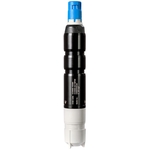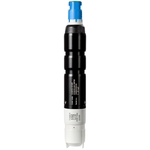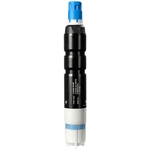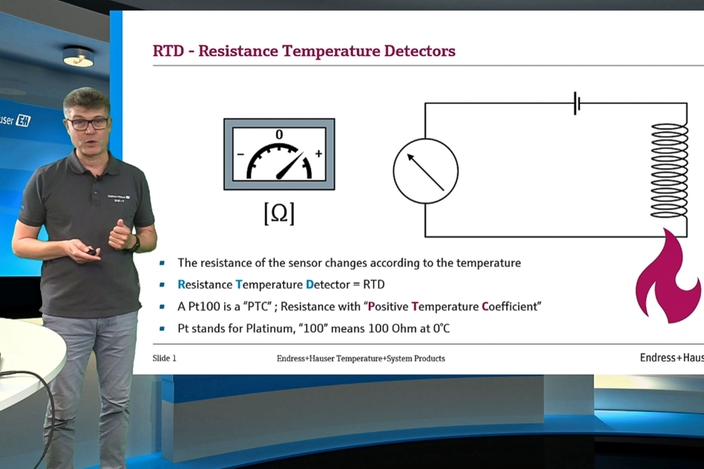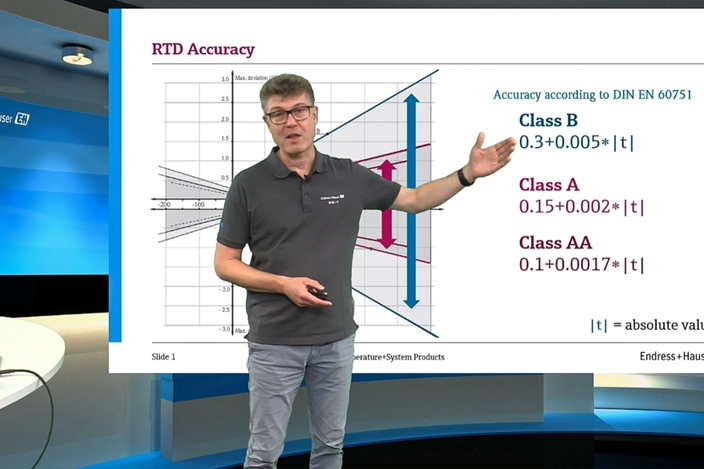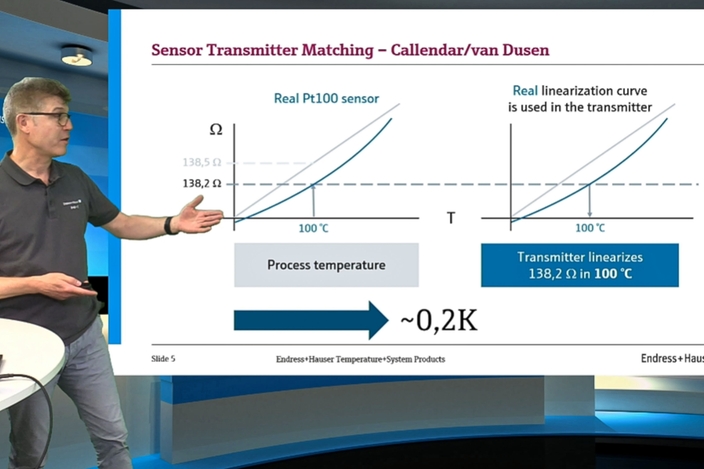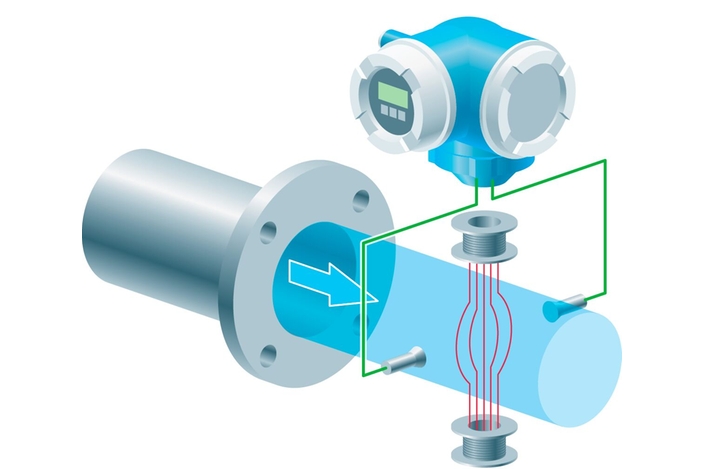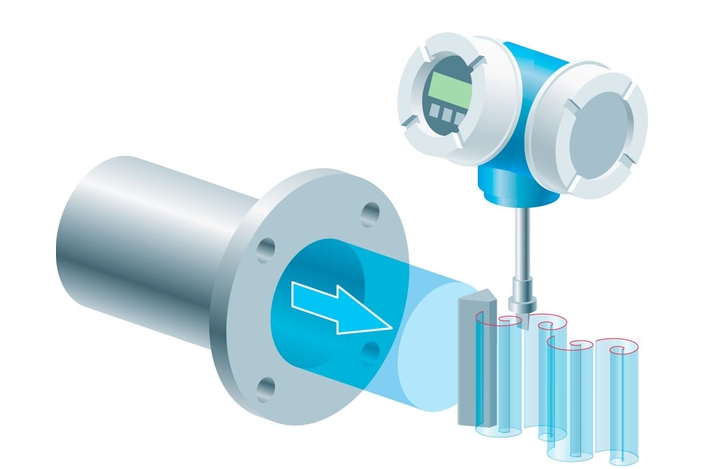Chlorine-based water disinfection
Disinfectants like chlorine- or bromine-based reagents, ozone, and organic substances are used depending on the application. Chlorine-based reagents are used in over 90% of disinfection applications, including cooling water, bottle cleaning, cold CIP, wastewater from treatment plants, and swimming pools.
Drinking water treatment
An example from Germany shows the drinking water treatment for about 4 million people. Water is abstracted from Lake Constance, cleaned of algae and suspended solids, and then disinfected. Ozone is often used as a disinfectant, followed by flocculants and multilayer filters. Before distribution, the water is slightly chlorinated to ensure safe supply.
Online measurement of disinfectants
Accurate dosing of disinfectants is crucial to avoid over- or under-dosing. Online measurement systems enable automatic dosing and provide full documentation of measured values. This significantly improves process safety and water quality.
Different chlorine compounds
Depending on the country and distribution network, free chlorine, chlorine dioxide, or bound chlorine is used. Free chlorine is pH-dependent and requires a combination of chlorine and pH measurement. Chlorine dioxide is pH-independent and increasingly used. Bound chlorine offers long-lasting disinfection, ideal for long distribution networks.
Disinfectants like chlorine- or bromine-based reagents, ozone and organic substances can be used depending on the application. This video focuses on the different chlorine-based reagents, since they’re used in more than 90% of all disinfection applications today. Cooling water, beverage bottle cleaning, cold CIP, the effluent water of WWTPs and swimming pools are just some of the applications. Let’s take a closer look at potable water production, which can vary considerably depending on the water source and region. This is a water treatment plant in southern Germany, which provides potable water for round about 4 Million people. Water is abstracted from Lake Constance at 60 m below the water surface and then pumped to the water treatment plant. Afterwards, it is cleaned from algae and suspended solids by microfiltration in screen drums.
Now, the water must be disinfected. In this first step of disinfection, ozone is most often the disinfectant of choice. For further cleaning a flocculant is added to coagulate unwanted components. In our example, the flocculant is dosed directly before entering a multilayer filter, which is used to remove last particles, including the flocculated components. After passing the multilayer filter, the water is already consumable. Before the water is distributed to the households, it needs to be slightly chlorinated to ensure a safe transport through the whole water network up to the households. Chlorine-based disinfectants are used because they provide a disinfection depot. At this point in the process, the Endress+Hauser disinfection sensor, matching the chosen disinfectant, can be found.
Why is online measurement of chlorine-based disinfectants advisable? When adding a disinfectant, the dosing must be extremely accurate: as high as necessary to eliminate pathogens but as low as possible to avoid overdoses. With online measurement systems, the dosing can be performed automatically, depending on the measured concentration. This prevents overdosage which can be harmful for the consumer or at least expensive for the waterworks. Underdosage on the other hand could cause a buildup of biofilm in the pipes and in the worst-case lead to contamination of the water. Of course, the online measurement can also be used as control element for manual dosing with full documentation of all measured values. That way, disinfection discontinuities can be detected and corrected immediately, which improves the process and water safety tremendously.
Depending on the country and the length of the distribution network, free chlorine, chlorine dioxide or bound chlorine is used. Free chlorine for example is an efficient disinfectant, as long as the disinfected medium is in the right pH range. And not just the effectiveness, but also the amount of measurable free chlorine is strongly ph dependent. To compensate the dependency and ensure right measurement values, a combination of free chlorine and pH measurement is necessary. The Memosens CCS51E free chlorine sensor by Endress+Hauser, combined with the Memosens CPS31E pH sensor and the Flowfit CYA27 assembly build a perfect unit to measure free chlorine. Our sensors have been developed for fast and stable measurement and furthermore, need very low maintenance. The flow monitoring and adjustment in the assembly make sure that the bypass measurement is always operational.
Chlorine dioxide is also used for drinking water and becoming more and more important in further applications due to the effectiveness against biofilm. In contrast to free chlorine; chlorine dioxide is not pH dependent and can be used without a pH compensation. Therefore we recommend the Flowfit CYA27 assembly together with the Memosens CCS50E chlorine dioxide sensor.
Finally, bound chlorine is the chlorine-based disinfectant that has the slowest reaction time and efficiency but builds a very long-lasting disinfection depot. This is ideal to ensure disinfection even in very long distribution pipes. Here the total Chlorine sensor Memosens CCS53E, together with the CYA27 assembly is the right choice. The new disinfection sensors belong to a, innovative disinfection sensor platform that consists of smart, low maintenance sensors with a high measuring stability. They feature a convex membrane made of dirt-repellent material that prevents soiling for stable measurement. The membrane cap design ensures optimized flow characteristics at the membrane for short response times.
Ultrasonic welding of membrane and density of the material prevent diluting of electrolyte for minimized drift and precise measurement. For easy installation, order and commissioning, Endress+Hauser offers standard panel solutions, using the recommended instrumentation. They come as a plug and play solution, preinstalled and piped on a panel. As you can see here. Adjustments to specific process requirements can easily be ordered. We will expand this disinfection platform successively with more sensors measuring parameters like free bromine or ozone and innovative technologies. Thanks for watching our video! If you want to learn more about our products visit www.endress.com.

